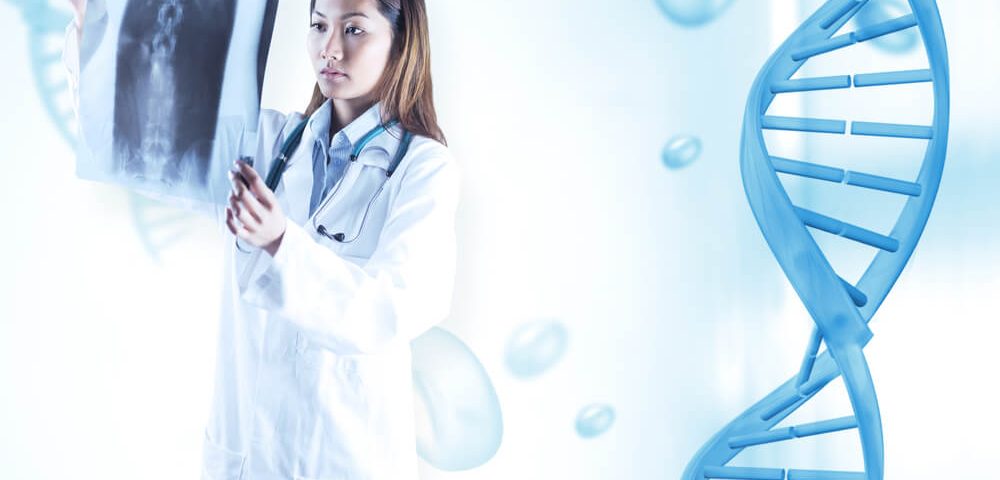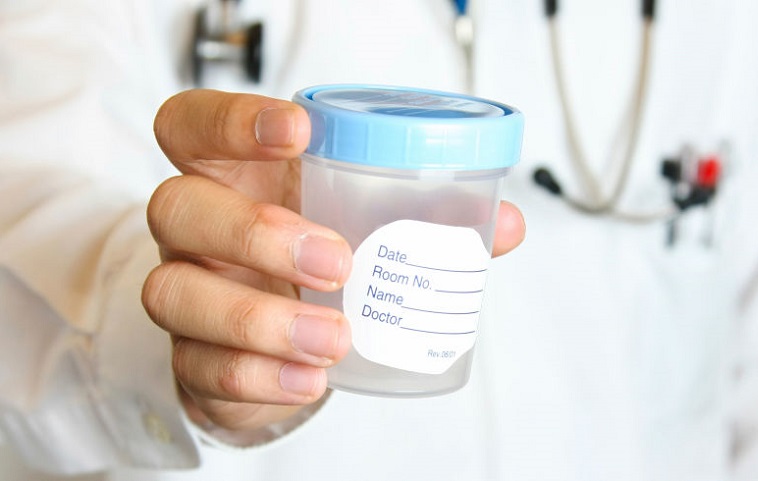Comprehensive Chromosome Scan

Considerations after Embryo Transfer
3 October 2022
Who is eligible for blastocyst transfer?
3 October 2022Comprehensive Chromosome Scan

Comprehensive Chromosome Scan
About 15% of couples who want to have a baby naturally fail despite numerous attempts. For pregnancy to occur, several factors must come together in a positive way. There are many treatments for cases where attempts at natural pregnancy have not been successful, and success can be achieved with a very high probability. When couples in need of reproductive treatment are treated with the right method and specialists, pregnancy and live birth are more likely to be possible.
Many different treatments are used to increase the chances of pregnancy in cases where pregnancy cannot be achieved or even if the pregnancy results in death or miscarriage in utero. For many years, one of the most effective such applications has been the method of preimplantation genetic diagnosis (PGD). However, today the method of complex scanning of chromosomes has begun to be used, which gives much more successful results than this method. Complex Chromosome Scan –is a very successful in vitro fertilization treatment applied to couples who are unable to conceive naturally.
What is the Comprehensive Chromosome Scan?
Comprehensive chromosome scan, used before starting IVF treatment, is a method that allows you to identify genetic features and possible abnormalities of the resulting embryo. All chromosomes present in the embryo are examined before Embryoscreated in the integrated chromosome scan application are transferred to the uterus of the expectant mother. Whereas in earlier methods, such as FISH, only some chromosomes are examined, 24 of the 24 chromosomes are examined in detail in a Comprehensive chromosome scan. The English abbreviation for complex chromosome scanning is “Array Comparative Genomic Hybridization” and is referred to as aCGH for short. With complex scanning of chromosomes, a detailed map of all the chromosomes of the examined embryos is compiled, and thus it is possible to see previously undetectable chromosomal disorders that could not be detected in any other way. Since all chromosomes can be scanned, the healthiest and best quality embryos are transferred into the mother’s uterus, making healthy pregnancy and live birth possible.
What are the differences between aCGH (Comprehensive chromosome scan) and PGT (Preimplantation Genetic Diagnosis)?
Before the discovery of aCGH, or Comprehensive chromosome scan, Preimplantation Genetic Diagnosis (PGT) was used to successfully treat IVF and live births. Thanks to the PGD method, some chromosomes of Embryoswere examined and it became possible to obtain information and ideas about some of the possible risks. In this context, PGD is still widely used in many IVF treatment centers. PGT, referred to as “fluorescent in situ hybridization” (FISH), is a successful method for identifying genetic problems. However, it is clearly insufficient compared to aCGH to diagnose all risks. The PGT method allows you to examine embryos only from certain sides. With PGT, it is not possible to visualize or detect genetic disorders in the test embryos that cannot lead to a live birth, or chromosomal problems in the high-risk group of early miscarriages by PGT. In this regard, only 60-80% of chromosomal abnormalities that can occur in an embryo can be detected by PGT, in which only 9 chromosomes are scanned. In this case, there is at least a 20% risk of chromosomal problems.
Remaining 40% or 20% after the PGT examination may vary depending on the chances of the future mother and father. If pregnancy cannot be achieved when the embryo detected by PGT is applied and displayed normally, without any problems, transferred to the uterus, this means that at this rate of 40%-20%, there is a problem that cannot be visualized. Even a 1% risk can mean a very serious problem for couples who want to conceive and have already tried and received treatment for pregnancy many times.
Comprehensive chromosome scan (aCGH) in question is located in the 40% or 20% section mentioned above, that is, all chromosomes of the embryo are examined in great detail. In this method, healthy embryos among 24 different chromosomes can be examined in all aspects, and the chances of pregnancy, healthy and live birth are increased. According to experts, the use of complex chromosome scanning increases the chances of pregnancy in 40-year-old women, which is usually considered a late and risky age for pregnancy, as in the 30-year-old state. Just as a woman in her 30s is more likely to become pregnant and give birth to a healthy live birth, women in their 40s who have had a Comprehensive Chromosome Scan will have a higher chance.
Chromosomal problems that could not be detected using applications created before the application of complex chromosome scanning can now be detected. As a result of such a scan, the couple’s chances of receiving a normal embryo may actually decrease. While it is possible to obtain a large number of embryos prior to scanning, the likelihood of finding a healthy embryo is reduced in patients with Comprehensive chromosome scans, and the risk of not having a healthy embryo is increased. In this case, the embryo transfer may not be carried out. In this regard, it is important that the number of embryos to be examined in couples be large. Because as the number of embryos increases, the chances of a healthy pregnancy will also increase.
Can pregnancy always occur with an embryo that turned out to be without problem?
Before Embryoscreated in the laboratory are transferred to the uterus of the future mother, they are examined in detail using PGT or the latest method – Comprehensive chromosome scanning. As a result of all examinations, the highest quality embryos, recognized as “normal”, that is, “problem-free”, are transplanted into the uterus of the expectant mother. If the scan reveals embryos with a chromosomal disorder or anomaly, there is a high risk of not getting pregnant, as well as a risk of not giving birth to a live baby even if pregnancy occurs. Pregnancies derived from embryos with these chromosomal abnormalities have a very high risk of miscarriage in the first weeks. Compared to the risk of not having a pregnancy at all, a miscarriage results in a pregnancy that is more devastating for the expectant parents.
In cases of detection of chromosomal negativity or pathology, the risk of failure after embryo transfer is also directly proportional to the age of the expectant mother. Unfortunately, this risk is much higher if the mother-to-be is 35 years of age or older. In this context, applications of genetic screening are particularly applied to Embryosof women over 35 who wish to become pregnant. Because the risk of chromosomal abnormalities increases with the age of the mother. With a Comprehensive chromosome scan, normal embryos are preferred, and such risks are minimized. However, in addition to all this, it is not enough that the embryo is healthy and of good quality, that pregnancy occurs, that there is a healthy period of pregnancy and that there is a live and healthy birth. In addition, many factors must be positive.
What is needed for pregnancy?
Many factors must be positive and healthy at the same time for pregnancy to occur. In this regard, healthy and sufficient uterine tissue of the expectant mother is one of the main desired conditions for the implementation of pregnancy. It is very important for the expectant mother to have a sufficient quantity and quality reserves of eggs, and for the future father – a sufficient quantity and quality reserves of spermatozoa. It is important to increase the number of embryos to be examined by PGT or complex chromosome scanning in order to select the healthiest and highest quality embryos needed for conception. In this regard, patients who wish to become pregnant can be prescribed drugs in various doses to increase the number of embryos.
High doses of these drugs, aimed at obtaining a large number of high-quality embryos, can cause both harm and injury. These high doses of drugs can adversely affect the uterine wall and damage the environment in which the embryo will attach. In such cases, even if a genetically normal embryo can be obtained in the laboratory, pregnancy may not be possible due to unsuitable uterine tissue or because the pregnancy cannot be maintained for a long time, this may lead to miscarriage in the first weeks.
In such a case, experts prefer to freeze the genetically engineered embryos and store them for future use in order to increase the pregnancy rate. In the intervening time, uterine tissue can be restored through treatment, and at the appropriate time, the same embryos can be thawed and transferred naturally to the uterus.
Is genetic screening necessary and for whom is it applied?
Couples who are trying to conceive naturally and are successful do not need any additional procedures. However, genetic screening can be used for couples who cannot conceive naturally despite trying for a long time, and for whom miscarriage or miscarriage and live birth are not possible even if pregnancy occurs.
Chromosomes are encoded in a person’s genetic cells and store the traits that make each person special, from eye color to character traits that guide every step in a person’s life. Chromosomes with 23 pairs, i.e. 46 in total, determine and contain all the characteristics of each. In this regard, problems that may arise in the genes or chromosomes of a person can also create an obstacle to conception. Although with chromosomal disorders it is unlikely that it is possible to become pregnant, an existing pregnancy is very likely to end in a miscarriage. Unlikely, but even in the presence of pregnancy and live birth, the risk of having a child with some anomalies in the presence of chromosomal disorders is very high. Because the disorder in the chromosomes, any unhealthy situation will certainly cause a negative situation.
In cases where a risky situation arises, and especially when the age of the expectant mother exceeds 35 years, it is very important to carry out a Comprehensive Chromosome Scan in order to prevent all these negative situations mentioned above. Considering life’s risks, such as the inability to conceive, an existing pregnancy leading to miscarriage or stillbirth, and the presence of anomalies even if a child is born, the importance of complex chromosome scanning can be understood much more clearly. First of all, it is advisable to use the Comprehensive Chromosome Scan for each pregnancy that does not occur naturally, taking into account such reasons as habitual miscarriage, a known chromosomal disorder or repeated IVF failures, and the advanced age of the expectant mother.
What genetic screening methods can be applied to the embryo?
Genetic screening methods used today to determine how healthy, high-quality the embryo is, how far it is from anomalies and choose the most healthy embryo and transfer it to the uterus; FISH stands for PGD and aCGH, Comprehensive Chromosome Scan.
In FISH and PGD, which are genetic screening methods, certain chromosomes are examined in terms of the genetic characteristics of the embryo. First of all, in the laboratory, the egg and sperm are brought together, fertilization is carried out and the embryo is formed. This embryo is stored for 3 days and after it reaches the 8 cell stage, one cell (trophoblast) is taken. The taken cell undergoes genetic analysis and is examined in detail. The decision is made taking into account the fact that the data obtained from the study of the taken cell indicate the entire embryo. In this context, an embryo deemed “normal” is transferred into the uterus of the expectant mother at the right time and under the right conditions. However, aCGH, that is, Comprehensive Chromosome Scan, can give much more detailed and accurate results.
When using aCGH, that is, a comprehensive screening scan, the fertilization of the egg and sperm occurs and the formation of the embryo. These embryos are kept in a suitable environment for 5 days. After selection and sifting of low-quality embryos from the outer wall of the remaining high-quality embryos, 2-3 cells (trophectoderm) are taken by biopsy and all good-quality embryos are frozen. Embryosare then sent to the laboratory. On average, a complete complex scan of the chromosomes of these embryos takes 2-3 weeks. After the most accurate and healthy embryos for pregnancy are determined, the expectant mother is given the preparation of the endometrium and the frozen normal embryo is thawed and transferred into the uterus of the expectant mother.
Which genetic screening method will be more effective?
The most basic feature that distinguishes the aCGH method from the FISH and PGD methods is that the full 23 pairs of chromosomes and the Y chromosome can be scanned. Conversely, up to 9 chromosomes can be scanned in FISH and PGD methods. With regard to the detection of chromosomal abnormalities, when scanning 60-80% of problems with the FISH method, this figure rises to almost 100% with the aCGH method. However, it is also very important in the study of embryos. Namely; In the FISH method, embryos are examined on the 3rd day, while in the aCGH method Embryosare examined on the 5th day, and meanwhile the last 2 days can really make a difference. Because in the 2-day period from the 3rd to the 5th day, the embryo can correct some problems within itself. Due to the self-healing property of the embryo, if an embryo examined at day 3 is examined on day 5, it can be seen that some problems have been eliminated and it is possible to have better, healthier embryos.
How much can the aCGH method increase the chances of pregnancy?
To perform a comprehensive chromosome scan, the mother-to-be must not become pregnant despite repeated attempts, have a known chromosomal disorder, be over 35, or have had recurrent miscarriages. A comprehensive chromosome scan can increase the chance of pregnancy by 5% in women with this type of anomaly and a low chance of conceiving or having a live child. Since each chromosome of the embryo obtained by this method is examined in detail one by one, the chance of finding a normal embryo is reduced. This situation, which may be perceived by some people as bad and negative, is actually quite positive and beneficial. Because instead of running the risk of not conceiving despite trying, which can lead to miscarriage in an existing pregnancy, stillbirth or birth of a child with an anomaly, it is best to detect and take precautions at the earliest possible time.
What does the aCGH method promise for the future?
A comprehensive chromosome scan is a beacon of hope for couples who have little chance of getting pregnant and who face the challenge of not having a healthy baby. It is expected that in subsequent periods, thanks to this method, success will reach about 80%. Considering that it promises a healthier and hassle-free pregnancy, especially for older women, women in their 40s may have an easy and hassle-free chance of getting pregnant as if they were 30 years old.
What should be considered when using aCGH?
The aCGH method should be used in centers with very good laboratory conditions and high quality equipment. In particular, it is very important that the medical personnel who will carry out the application be experts and have experience in their field.

